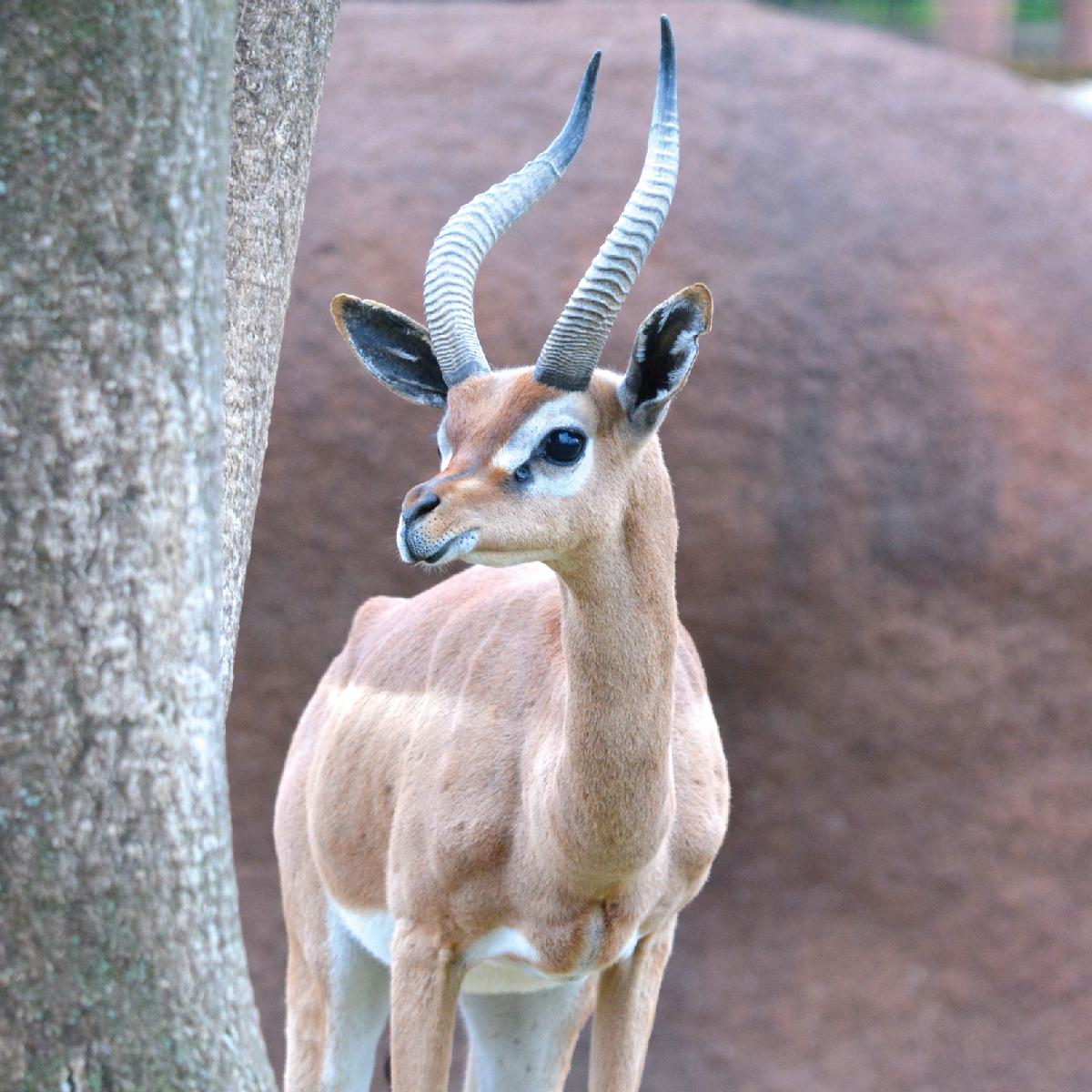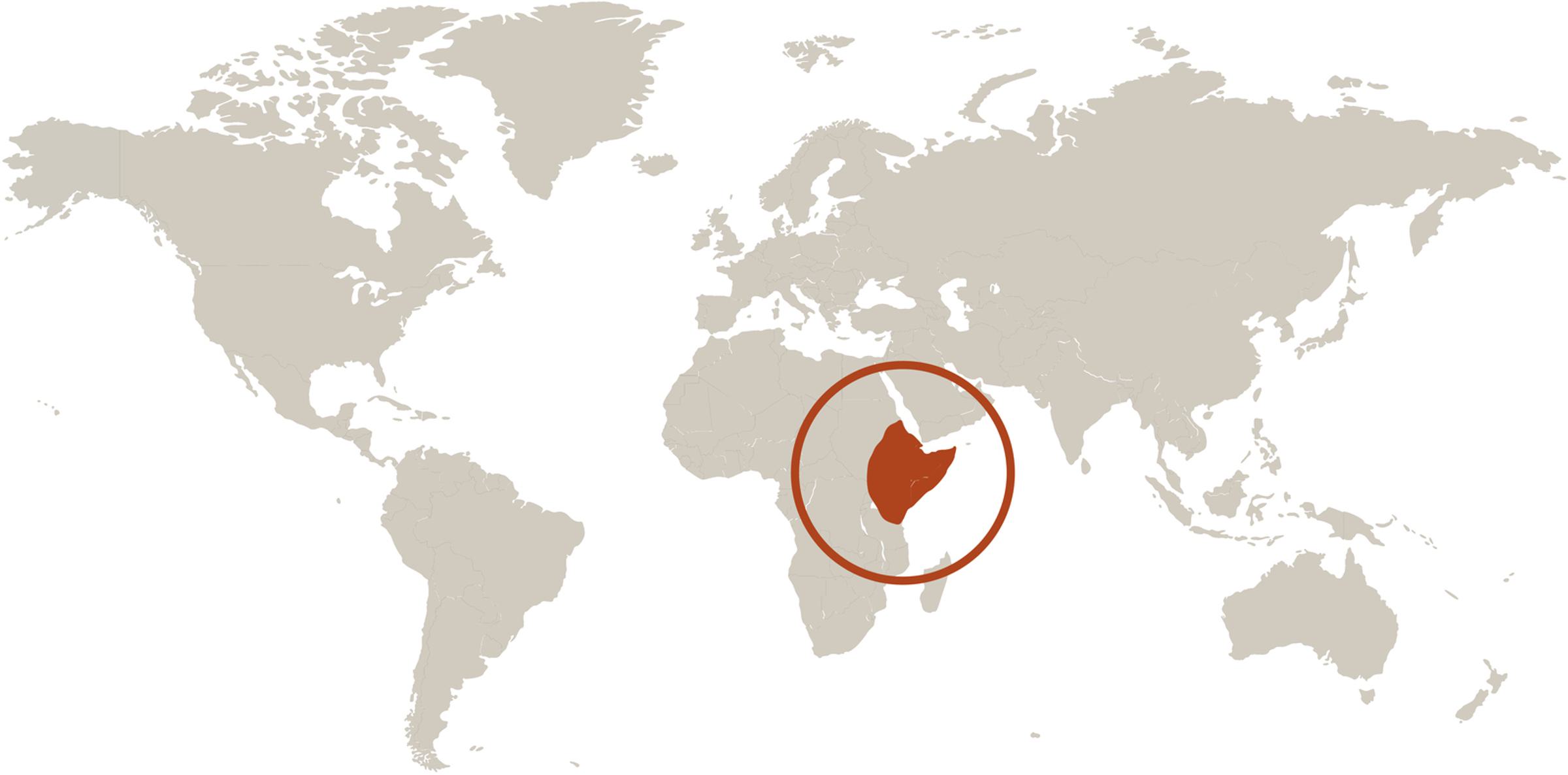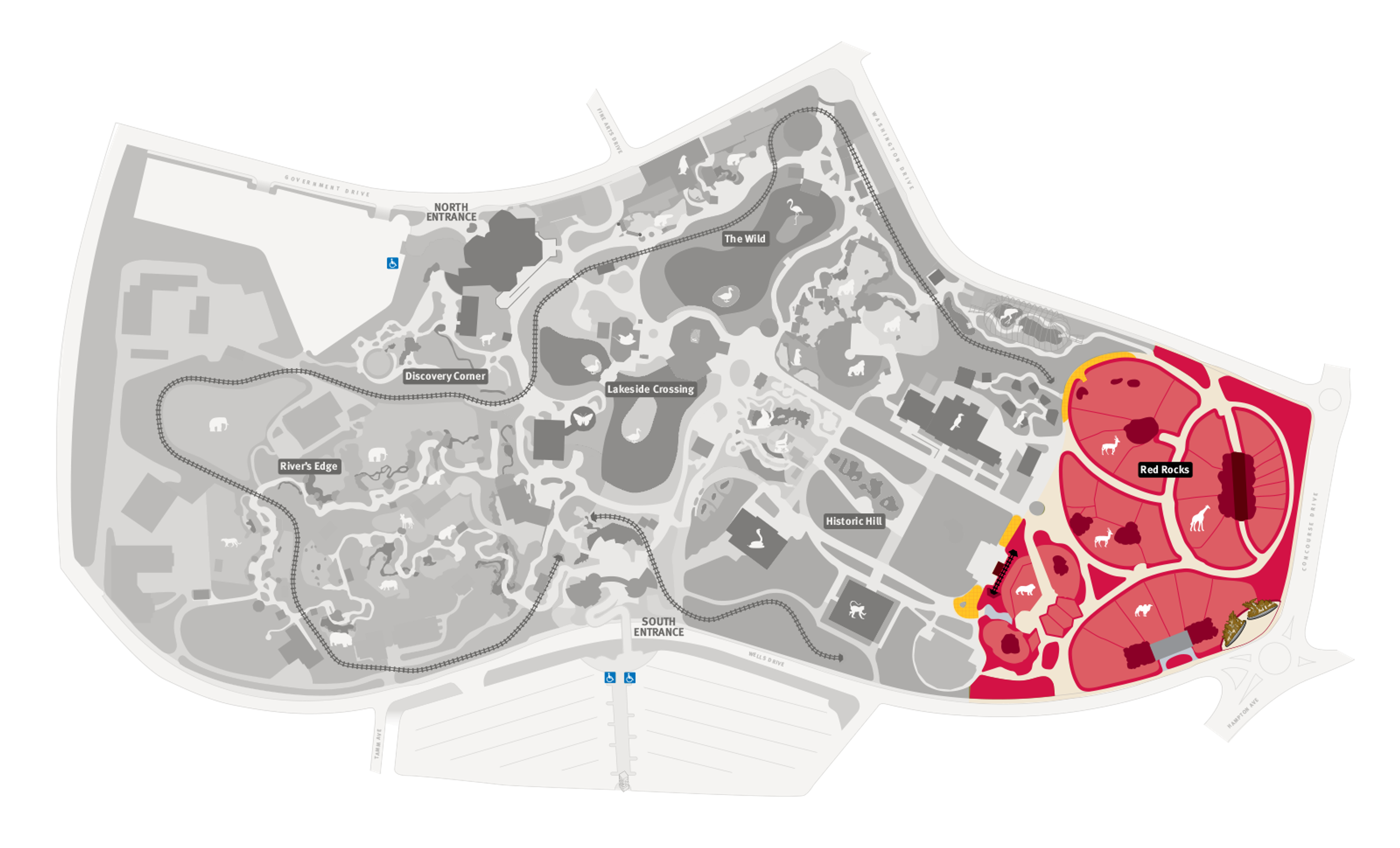
Gerenuk
Litocranius walleri
Did you know?
- Gerenuks are known for their long, strong yet thin legs and long slender necks.
- Only males have the large, ridged horns.
- Gerenuks eat a variety of tender leaves, shoots, fruits, blooms and buds from trees.
- Their name means “giraffe-necked” in Somali.
- Females are pregnant for six to seven months, after which a single calf is born.
Adaptations
Gerenuks have amazing feeding adaptations to reach leaves most other animals cannot access. Their powerful legs and specialized backbone help them stand on two legs to make themselves taller. Thanks to their “giraffe-like” necks, they are taller than six feet when they stand on all 4 legs. Similar to other browsers (animals that eat from trees) like black rhinos and giraffes, gerenuk have a pointed snout and long upper lip and tongue which allows them to avoid thorns when finding tasty leaves.
Social Structure
Gerenuks live in small herds made of females and their young. Adult males are solitary except during breeding season. They establish territories that they mark with scents from both gland secretions and urine. In fact, they have scent glands near their eyes, knees, and hooves! During breeding season, adult males will defend their territories from other males using their large, curved horns.
Threat Level
- Unknown
- Common
- Near Threatened
- Threatened
- Endangered
- Critically Endangered
- Extinct in the Wild
Near Threatened
The Gerenuk is likely to qualify for vulnerable category in the near future.
Range
East Africa: Somalia, eastern Ethiopia, and Kenya.
Habitat
Semi-arid brush land

We care about gerenuks
Gerenuks benefit from environmental changes caused by the overgrazing of domestic livestock. The barren scrubland left in the wake of the destructive cattle is prime habitat for these antelopes. We support gerenuks in Red Rocks at the Zoo. Learn more about how we help wildlife around the world.
Find this animal in Red Rocks

SAINT LOUIS ZOO ZONE
Red Rocks
At Red Rocks, you’ll view some of the world’s most powerful predators living near some of the world’s most graceful prey. Tigers, zebra and giraffes all share the natural rocky boulders and outcroppings as their territory. With shading trees and a bird or two among the mammals, Red Rocks is a great place to spend a day at the Saint Louis Zoo.

